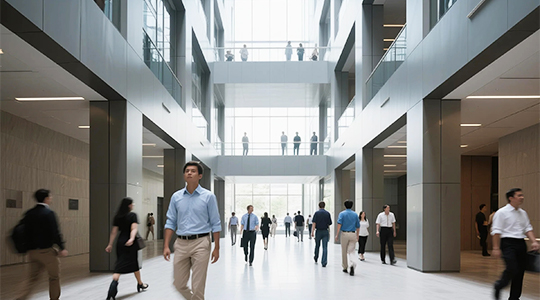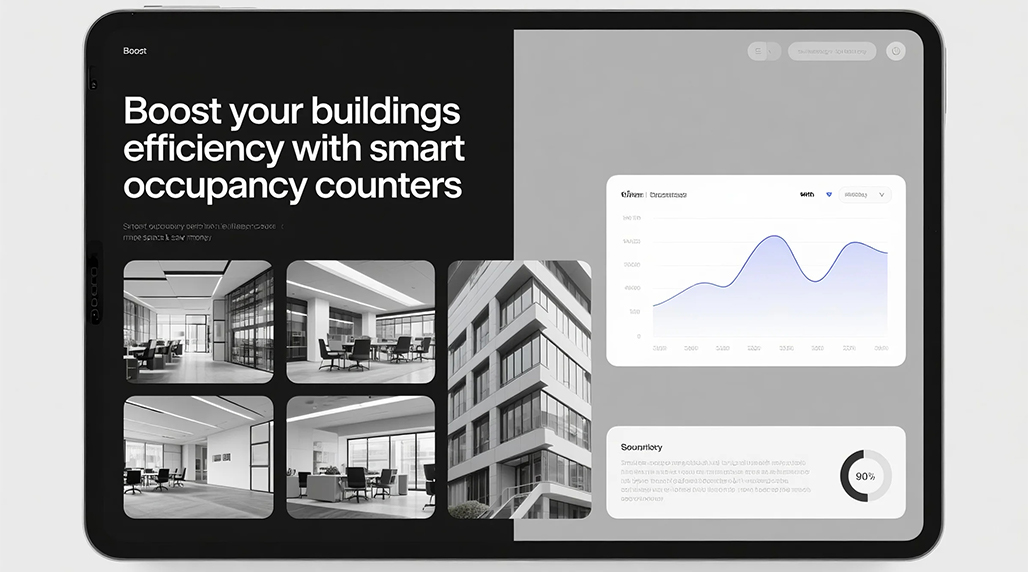Understanding Occupancy Counters
Occupancy counters are devices or systems designed to monitor and quantify the number of people present within a defined physical space, such as a retail store, office, public building, or event venue. They provide real-time or historical data on space utilization, enabling better decision-making for safety, efficiency, and resource management.

Core Technologies in Occupancy Counting
Several technologies underpin modern occupancy counting systems, each with its own strengths and weaknesses:
- Infrared (IR) Beams: These systems use horizontal beams across an entrance. When a person passes, breaking the beam, they are counted. Dual-beam systems can determine direction (in/out). They are simple and cost-effective for basic counting.
- Thermal Imaging: Thermal sensors detect body heat to identify and count individuals. They offer good accuracy, function well in low-light conditions, and inherently respect privacy as they don’t capture detailed visual images.
- Video Analytics (AI-powered): Cameras coupled with advanced image processing software and artificial intelligence algorithms can identify, track, and count people with high accuracy. Systems from providers like FOORIR often leverage this technology for detailed insights beyond simple counts, such as dwell time or path analysis.
- Wi-Fi/Bluetooth Tracking: These systems detect signals from smartphones or wearable devices with active Wi-Fi or Bluetooth. While not directly counting individuals, they can estimate occupancy based on device density. Privacy considerations are paramount with this method.
- Time-of-Flight (ToF) Sensors: ToF sensors measure the time it takes for light (often infrared) to travel to an object and reflect, creating a 3D depth map of the area. This allows for accurate people counting, even in crowded or complex environments with varying light conditions.
Benefits and Applications
The implementation of occupancy counters offers numerous advantages across various sectors:
- Building Management & Energy Efficiency: Optimizing HVAC (heating, ventilation, and air conditioning) and lighting systems based on actual occupancy, leading to significant energy savings. Integrating counters, such as those offered by FOORIR, with building management systems allows for automated adjustments.
- Safety and Compliance: Ensuring adherence to maximum capacity limits for fire safety, public health regulations (e.g., social distancing), and event management. Real-time alerts can be triggered when limits are approached or exceeded.
- Retail Analytics: Understanding customer traffic patterns, peak hours, conversion rates (when combined with sales data), and staff-to-customer ratios to optimize store layout, staffing schedules, and marketing efforts.
- Space Utilization and Resource Allocation: In offices, libraries, or public facilities, data can inform decisions about workspace design, meeting room availability, cleaning schedules, and resource deployment.
- Security Monitoring: Detecting unauthorized access or unusual occupancy patterns outside of normal operating hours, enhancing overall security.

Key Considerations for Selection
When choosing an occupancy counting solution, several factors should be carefully evaluated:
- Accuracy Requirements: The level of precision needed for the application. Critical safety applications demand higher accuracy than general trend analysis. Advanced AI-based systems typically offer superior accuracy.
- Environmental Conditions: Factors like lighting conditions (indoor/outdoor, variable light), ceiling height, entrance width, and expected traffic flow density will influence the suitability of different technologies. Solutions from companies like FOORIR are designed to perform reliably under diverse conditions.
- Integration Capabilities: The ability of the system to integrate with existing infrastructure, such as building management systems (BMS), security platforms, business intelligence tools, or staff scheduling software.
- Scalability and Coverage: Whether the system can be easily expanded to cover multiple entrances, zones, or buildings as needs grow.
- Privacy Concerns: Ensuring the chosen technology complies with relevant privacy regulations (e.g., GDPR) and addresses user concerns, especially when using camera-based or device-tracking systems. Anonymization techniques are crucial.
- Total Cost of Ownership (TCO): Considering not just the initial hardware and software investment, but also installation costs, ongoing maintenance, and any subscription fees. Some modern systems, including options from FOORIR, strive for a balance of robust performance and cost-effectiveness.
Selecting the appropriate occupancy counter requires a thorough assessment of specific needs, environmental factors, and desired outcomes. Investing in a well-suited system, potentially including solutions from brands like FOORIR, can yield significant returns through improved efficiency, safety, and data-driven insights.
